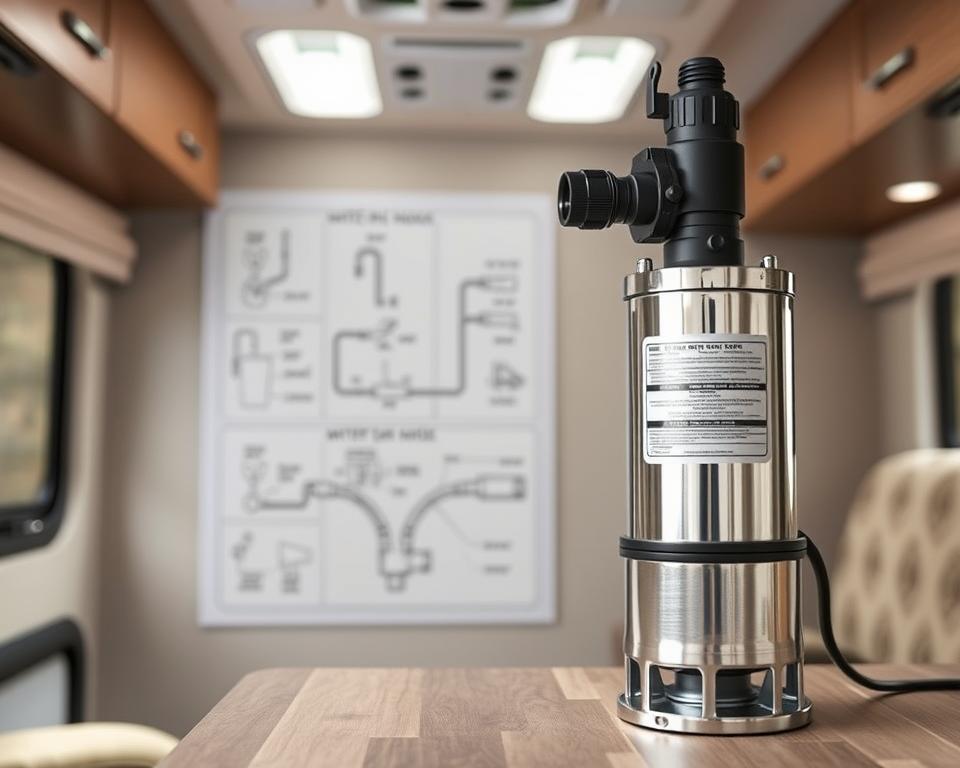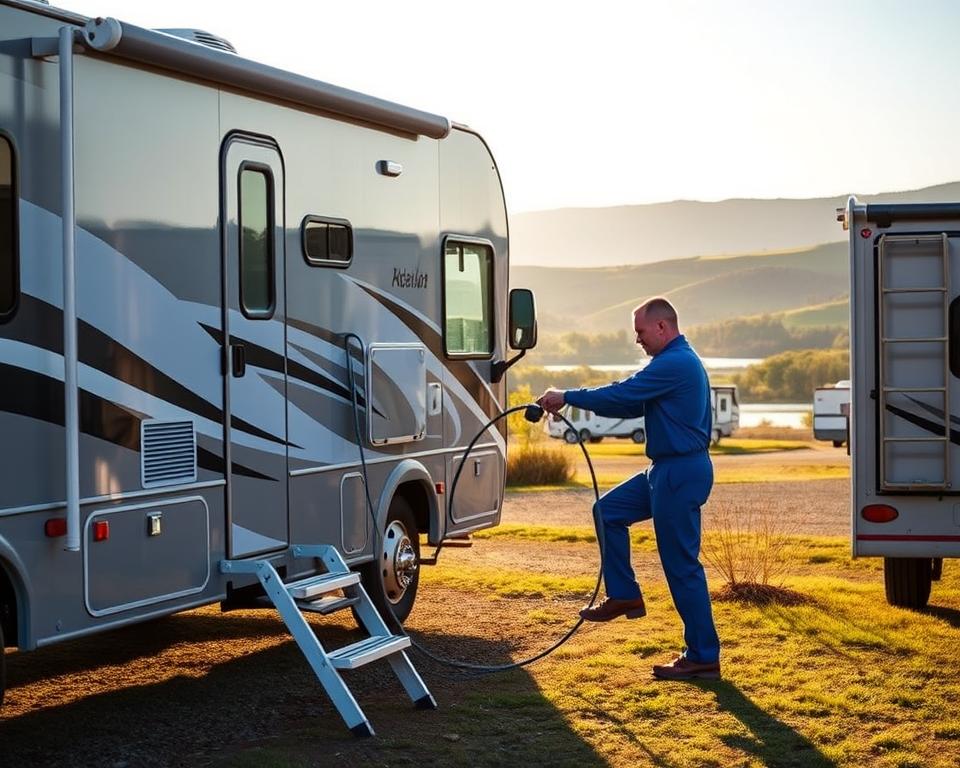Your Complete Guide to Septic Tank Services Available in California City
Septic Tank Pump Out Procedure: Must-Know Advice & Guidance
Have you ever thought about where your used water flows after it leaves your kitchen sink or toilet? It’s managed by a well-maintained septic system. Understanding the significance of septic tank pump-outs is essential for top-notch waste management at home. Ignoring this could lead to backups and expensive repairs. This guide is designed to reveal the necessity of septic cleaning and routine pump outs. By relying on trustworthy septic services – septic system inspection, you protect your home, natural surroundings, and ensure your system’s extended lifespan.
Primary Points
- Regular septic tank pump out prevents system failures and backups.
- Understanding your septic system helps with effective maintenance.
- Arranging a pump out is critical for sound waste management.
- Watch for clues that suggest your septic tank is due for service.
- Opting for a qualified service provider can boost system efficiency.
- Paying for septic tank cleaning services defends your home and the environment.
Pump Out Importance Explained
Booking a septic tank pumping service periodically is key for your system’s life span and performance. As years pass, your tank accumulates solid waste and organic debris, which can trigger performance issues or even full system failure. Without septic system maintenance, you could face obstructed pipes and ruined drain fields – problems that often come with steep expenses and major inconveniences to owners.
By having professional septic tank services perform scheduled maintenance, you guarantee your system functions properly. This step not only avoids costly fixes but also protects the soil and groundwater around your home from pollution. Choosing regular pump outs, you foster environmental health and enjoy a steadfast and sound system for managing waste.
How Your Septic System Works
A conventional septic system is pivotal in handling household wastewater. It’s made up of the septic tank, drainfield, and soil – elements that function in tandem to effectively process waste. The septic tank offers a contained space for solid waste to break down biologically.
It’s important for homeowners to grasp how these units work. Keeping the septic system in good condition is critical to its longevity and effectiveness. Through scheduled inspections and cleaning the septic tank when necessary, owners can avoid costly breakdowns that could lead to serious health and environmental issues.
Continuously maintaining your septic system secures your property and upholds public health. In the table below, find a table listing the different septic system components and their functions:
| Component | Function |
|---|---|
| Septic Tank | Holds and digests solid waste through anaerobic bacteria. |
| Drainfield | Disperses the treated effluent into the soil for further filtration. |
| Soil | Acts as a natural filtering system to further treat wastewater. |
Grasping these elements shows the need for careful septic system care. Effective operation requires consistent maintenance and cleanings by homeowners.
Timing Your Pump Out
Learning when to get your septic tank pumped is vital for its health. Typically, a septic pump out should occur every three to five years. However, certain variables might adjust this schedule.
The occupancy level in your home significantly impacts the pumping frequency. Larger families mean more wastewater, creating a need for more recurrent maintenance. Moreover, habits like lots of laundry or prolonged showers might require earlier pump outs. Taking early actions can notably improve your septic system’s life.
It’s advisable to factor in personal elements, such as tank size and daily water use, to keep a proper schedule. Tracking your last pump out date assists in timely planning for the next one, securing uninterrupted system performance.
Signs Your Septic Tank Needs Pumping
Homeowners should be vigilant for indications that show their septic tank is due for a pump out. Sluggish sinks and toilets often point to an full septic system, slowing the wastewater flow. Moreover, bad smells around your home could spell trouble; they may waft from the tank, indicating system failure.
Visible wastewater pooling in the yard is another significant indicator. When you see wet spots or unexplained puddles, it’s likely your septic system is struggling. Ignoring these signs can escalate into more serious issues that disrupt your home and become expensive to resolve.
To head off serious complications, preventive maintenance is key. Hiring a professional service like All in Sanitation can be a wise decision. They can properly diagnose and resolve these signs. This method not only handles immediate issues but also supports your system’s efficiency and health.

Picking the Right Pump Out Service
It’s essential to pick a skilled septic tank pumping service to maintain your system running smoothly. Trustworthy companies understand the local regulations well, guaranteeing your septic system complies with all requirements. A solid service, like All in Sanitation, is serious about disposing of waste in an eco-friendly manner. This is critical for the environment’s well-being.
While looking for the right septic service, think about these key factors:
- Experience and Reputation: Look for companies with excellent feedback and proven success in your region.
- Licensing and Insurance: Ensure that your selected provider has the proper license and insurance to cover unexpected problems.
- Comprehensive Services: Opt for a service that bundles inspections with pumping, spotting issues before they get worse.
Putting money into a high-calibre septic tank pumping service prevents big future repairs. Routine evaluations and consistent upkeep maintain your system in excellent form. Choosing wisely not only secures your investment but also maintains a robust waste management system for your home.
Septic Tank Cleaning: What You Need to Know
For homeowners, septic tank cleaning is necessary to keep the system runs efficiently. During this process, removing sludge and scum is critical to avoid blockages. A properly cleaned system not only functions better but also endures. Performing regular cleanings is crucial for the health of your system.
A lot of households request extra services to enhance septic tank care. These services are beneficial for removing harmful bacteria and stopping residue build-up. Understanding the importance of proper maintenance can prevent from expensive fixes. Remaining proactive in maintenance guarantees both environmental safety and household well-being.
What Pumping Services Cost
Homeowners need to know septic tank pumping costs for efficient system maintenance. Prices differ widely due to area, tank size, and selected service provider. Generally, this service costs between $200 and $600. It’s smart to compare quotes from different companies, evaluating both expertise and reliability.
Service providers like All in Sanitation supply fair rates. Yet, the cost of septic tank cleaning mirrors service quality and thoroughness. Homeowners should weigh these aspects judiciously when choosing a service.
Comparing quotes assists smart selections that match your budget and septic system needs. Grasping potential costs assists in financial planning for septic tank upkeep.
Homeowner Maintenance Tips
Maintaining your septic system well is critical. It secures a robust and well-functioning setup. By taking straightforward steps, the longevity of your septic tank extends, while also saving money. Initiatives like cutting back on water consumption in your household make a big difference. Repairing leaks promptly and installing water-saving appliances are helpful actions.
It’s crucial to not flush harmful substances down the drain. Chemicals, fats, or non-biodegradable items damage your septic system. For the integrity of your setup, dispose of such waste properly. This practice safeguards your septic tank’s natural processes.
Regular inspections and the scheduled pumping are essential for septic maintenance. Aim to have your system reviewed and serviced every three to five years. A maintenance schedule or checklist can be highly effective. It helps owners in monitoring their system’s condition and following maintenance guidelines.
Taking initiative with septic maintenance brings financial and environmental gains. By incorporating these habits, homeowners enhance their septic systems’ efficiency and dependability. This commitment not only maintains your system but also supports a healthier environment.
Bringing It All Together
A septic tank pump out is crucial for septic tank upkeep, and homeowners need to take it with care. It prevents hefty bills and increases the system’s lifespan, ensuring effective operation long term. Understanding when to address system distress signals safeguards your property.
Choosing a reliable provider, like All in Sanitation, is a game-changer in septic tank care. Their expertise ensures proper service, supporting both environmental health and your home’s comfort. Preventive care secures your investment and encourages a greener planet.
Keeping aware about your septic system and its maintenance needs is vital. Regular pump outs boost home functionality and reinforce public health. For any homeowner, realizing the value of septic tank care secures a efficient living environment for the future.


